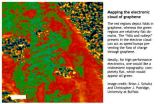The report warns, however, that even a small decline in annual funding could jeopardize this pipeline, derail development of needed products, and paradoxically also increase development costs later. The report's authors assessed progress to date against the R&D funding goals in the 2008 Global Malaria Action Plan and what will be needed in the coming decade to deliver the suite of products needed to manage, eliminate and—ultimately—eradicate malaria from the world. The answer is sustained, relatively modest increases that will boost total annual funding to US$690 million by 2015, followed by a larger jump in 2016 to US$785 million.
The report, "Staying the Course? Malaria Research and Development in a Time of Economic Uncertainty," was authored by Policy Cures, an independent nonprofit research group, with input and funding from several product development partnerships working on new malaria interventions. It was published by the global health nonprofit PATH and the Roll Back Malaria Partnership, which is the global framework for coordinated action against malaria.
The malaria product pipeline today includes more than four dozen drug projects, an almost 17-fold increase since 2001, a vaccine candidate in late-stage testing and dozens of others in various stages of development, an unprecedented number of new insecticide active ingredients for mosquito control, and a new generation of simple, rapid, and highly sensitive diagnostic tests.
"In the coming years, the fruits of this unprecedented investment in malaria research and development could save hundreds of thousands, if not millions, of lives," said Professor Awa Marie Coll-Seck, Executive Director of the Roll Back Malaria Partnership and a former Minister of Health for Senegal. "This robust product pipeline gives us hope that eradication of malaria is possible. Backpedaling on R&D funding now, when so many innovations are in the pipeline, would be a foolish waste of a historic opportunity."
The report offers six key recommendations, among them a plea for better coordination among a greater number of funders from the public, philanthropic, and private sectors, and greater flexibility of public sector funding in particular. Without sufficient coordination, the authors warn, future product development costs will be even higher than currently projected.
The increasing availability of new approaches to detecting, treating, and preventing the disease—including long-lasting insecticide treated bednets and the first high-quality malaria medicine developed specifically for children—have contributed to a significant decrease in malaria deaths worldwide in only ten years: According to the World Health Organization, 11 African countries have achieved a 50 percent reduction in either confirmed malaria cases or malaria-related hospital admissions and deaths in recent years. Nonetheless, malaria still kills about 780,000 people annually, mostly young children in Africa.
The report highlights the importance of maintaining the momentum of the last two decades and keeping the world on a path toward further reductions in malaria deaths. On the R&D front, annual investments would need to increase from the 2009 level of US$612 million to US$690 million. There would then need to be a 15 percent increase around 2016 to US$785 million to pay for the high-cost of advancing products through the final stages of clinical testing. The analysis finds that making adequate investments now should allow overall malaria R&D funding to decline after that by about 5 percent per year until 2020, the last year covered by the report, as the fruits of earlier investments become available.
"This report tells us that the malaria control community is in a position to achieve unprecedented reductions in malaria deaths if investors stay the course," said Dr. Mary Moran, Director of Policy Cures.
"I'm delighted that the donor community has stepped up to the plate and recognized the important role of research and development in combating malaria," said Jeremy Lefroy, MP, Chair of the United Kingdom's All-Party Parliamentary Group on Malaria and Neglected Tropical Diseases. "We are saving lives today due to tools developed a decade ago, and we will save lives tomorrow with the tools being developed today."
Targeted, strategic investments needed
Sustained and gradually increasing investments in R&D over the next few years will advance the development of new diagnostic tests, new mosquito-killing compounds that can be used in bednets and indoor spraying, and new and next-generation drugs and vaccines, according to the report.
Funding for R&D related to diagnostic tests should quadruple immediately—to make up for years of underfunding—from US$11.9 million in 2009 to US$50 million per year for about four years—to develop rapid diagnostic tests (RDTs) and other field detection tools. Funds are needed to ensure the quality of existing RDTs, develop tests for multiple forms of malaria, ensure safe and targeted use of new anti-malarial drugs, and create more sensitive screening measures that can quickly detect a potential resurgence of the disease in areas where the burden of malaria is dropping.
Current approaches to controlling the mosquitoes that carry the malaria parasite (vector control) rely predominantly on a single class of insecticides called pyrethroids. The emergence and spread of resistance to these insecticides amongst mosquitoes puts this strategy at great risk. Annual funding needs to nearly triple over the next five or six years to a peak of around US$90 million in 2016 to add new compounds to the vector-control arsenal, according to the report.
The analysis warns against any further declines in funding for drug development, noting the need for stable funding to ensure that drug development doesn't slow. New products are needed to address Plasmodium vivax malaria and to deal with the emerging problem of resistance to artemisinin—a key compound in the most effective treatment drugs used today.
Funding levels for vaccines are viewed as adequate for the moment, but efforts to develop a second generation of more effective vaccines, a vaccine against P. vivax malaria, and transmission-blocking vaccines will require a boost in investments from 2016 onward.
"The global malaria community does not need a blank check, rather it needs targeted and strategic investments that continue to take us toward the goal of eradicating malaria," added Dr. Moran. "Funding is needed to enable the development of new medicines to counter resistance, block transmission of malaria, and address the P. vivax form of malaria."
Donor diversification and coordination needed
The report notes that malaria R&D funding is highly concentrated and calls for additional donors and investors to enter the field. Funding from fewer than a dozen governments accounted for nearly half of total malaria R&D funding in 2009 and industry for nearly one-fifth. The Bill & Melinda Gates Foundation was responsible for one-quarter of total funding that year and was also the largest single donor (US$184 million), followed closely by the US government (US$165 million). The United Kingdom, European Commission, and the Wellcome Trust each invested more than $25 million in 2009.
A further challenge is posed by the need for coordination among the private, philanthropic, and government sectors. The estimates of resource needs contained in the report are based on the assumption that investors will work together to develop a balanced portfolio and determine when certain areas require increased funding and when reductions are justified elsewhere. The report recommends a strategic ebb and flow over the next several years, during which spending increases in certain areas are made possible by the ability to reduce spending elsewhere as projects move to completion. In the absence of such coordination among funders, achieving product development goals will be more costly and many may not be reached at all.
"We have come together as a global community to put an end to this vicious disease once and for all. But we must remember that if we are to defeat malaria, we must fully deploy the tools we have today and continue to invest strategically in the development of superior tools for tomorrow," said Professor Coll-Seck.
###
Roll Back Malaria, Foundation for Innovative New Diagnostics (FIND), Innovative Vector Control Consortium (IVCC), Medicines for Malaria Venture (MMV), and the PATH Malaria Vaccine Initiative funded the report.
END


